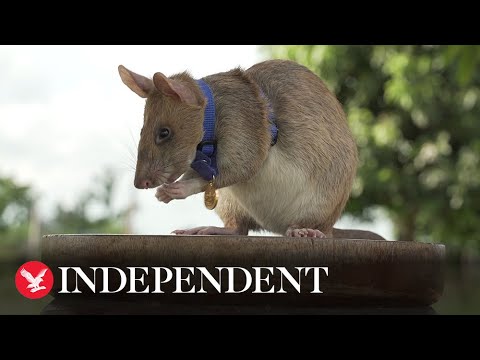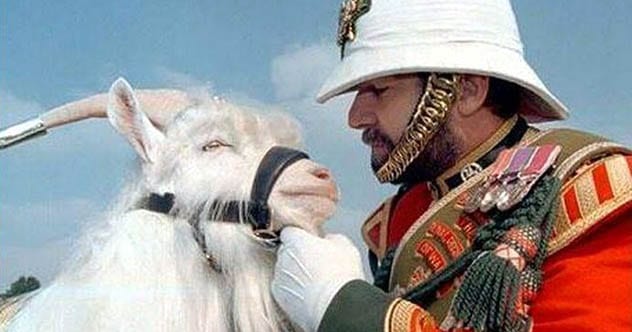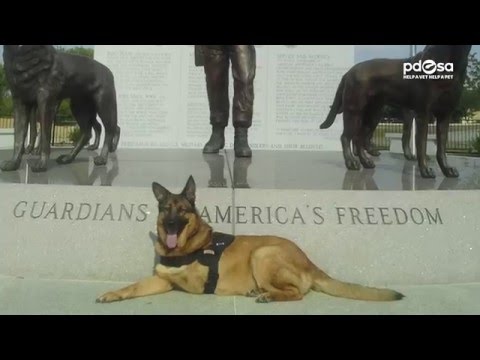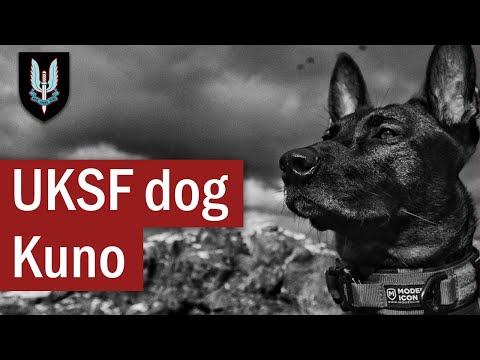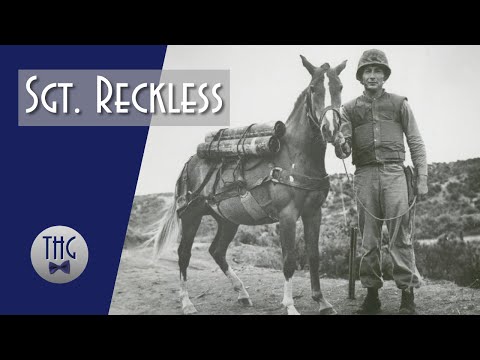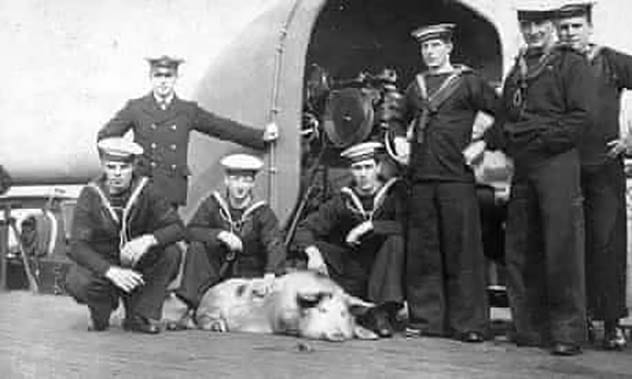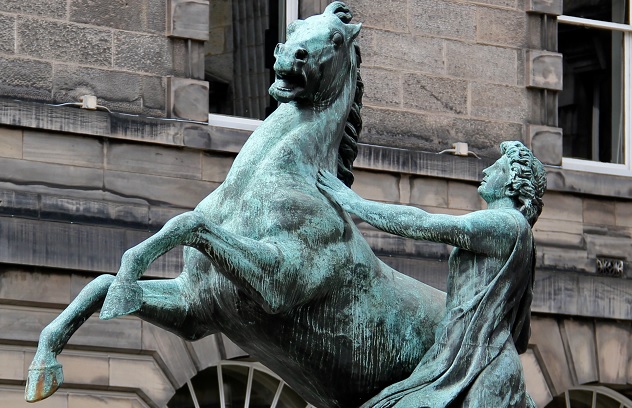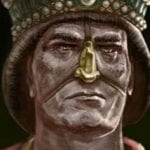Here are ten animals that have won high honours from their human colleagues. Top 10 Cutest Animals In The World (According To Science)
10 Magawa
Rats are generally not the most respected of animals. But this year a rat called Magawa has been presented with a small gold medal for “lifesaving bravery and devotion to duty.” Magawa is a giant pouched rat who has the dangerous job of clearing landmines in Cambodia. Able to sniff out the explosive devices, but too light to set them off, Magawa has helped to clear an area equivalent to 20 football pitches. Cambodia is littered with millions of landmines and thousands of people have died from being caught in their blasts. With even the best technology detecting them is a long and unsafe task. Magawa works for just half an hour each morning in return for a small treat and finds landmines that can keep his human handlers busy all day. Magawa is soon to retire but other rats are being trained to take over his role. If they keep up the good work then they too could win a golden medal.[1]
9 William Windsor
Not all animals that are given high honours live up to the level of expectation of their humans. Since the time of Queen Victoria the 1st Battalion Royal Welch of the British Army has received a goat as their mascot from the monarch. In 2001 they got goat army number 25232301 – also known as William “Billy” Windsor. Not only is the goat a mascot for the soldiers he is an active member of the army. Billy was given the rank of Lance Corporal. With his rank any soldier that he outranked would have to stand to attention as the goat trotted by. Unfortunately on his first overseas duty Billy acted in a less than soldierly manner. During a parade Billy refused a direct order from his superior and strayed out of line. For this he was demoted to Fusilier. Billy soon after regained his rank and has since retired from his position. As well as the honour of his rank Billy had other perks. Each day he was given two cigarettes to eat and a drink of Guinness.[2]
8 Lucca
The Dickin Medal is among the highest awards animals can receive for bravery. Given by the People’s Dispensary for Sick Animals (PDSA) charity the medal is only presented to animals who show exceptional gallantry in wartime. Lucca, a dog working with the United States Marine Corps, was the first American dog to receive the British award. During six years of active service in Afghanistan Lucca took part in over 400 patrols. Sniffing out IEDs that were the bane of those serving in the country Lucca no doubt saved many lives. The final device she identified weighed over 30 kg and had huge destructive power. It was moments later that another one detonated and Lucca suffered burns and injuries. Unfortunately her front leg had to be amputated. Once she recovered Lucca was flown to London to be awarded the Dickin medal. Lucca was also presented with a purple heart, the medal given to members of the US armed services injured in battle. In an unofficial ceremony when he was given one by a Marine who had twice received the purple heart himself.[3]
7 GI Joe
The first American winner of the Dickin award however was much earlier and was a pigeon given the name GI Joe. During the Allied advance in Italy during the Second World War Allied troops made such a speedy invasion that they found themselves far ahead of where they were expected. When they captured a village that had been in German hands they were at risk of being bombed by their own planes because no one thought they would be there. With their radio unable to reach the airbase where the planes were about to launch the troops turned to their last hope – Pigeon USA43SC6390, AKA GI Joe. He got through to the base just in time and the bombing was called off, saving over 100 lives. The citation that went with the Dickin medal presented to GI Joe read: “This bird is credited with making the most outstanding flight by a USA army Pigeon in World War II, Making the 20 mile flight from British 10th Army HQ, in the same number of minutes, it brought a message which arrived just in time to save the lives of at least 100 Allied soldiers from being bombed by their own planes.” Joe went on to a happy and long retirement after the war.[4]
6 Kuno
Dogs have long been credited as man’s best friend and it certainly seems that in the battlefield they are. Dogs have often come to their handlers’ defence even at the risk of their own lives. One dog named Kuno suffered a great deal of pain when he leapt into a fight with an al-Qaida gunman. Kuno was serving alongside the elite Royal Navy’s Special Boat Service when they led an assault on an insurgent compound. Pinned down by machine gun fire and grenades the forces were unable to proceed. Kuno tackled one of the gunmen and allowed his humans to successfully take their target. Kuno suffered gunshots in both his back legs but was saved and carried to safety. A portion of one leg had to be amputated and Kuno became the first British forces dog to receive custom-made prosthetic legs and can now be found running around in retirement. Kuno has become one of the latest recipients of the Dickin medal. The British Defence Secretary said “Without Kuno, the course of this operation could have been very different, and it’s clear he saved the lives of British personnel that day.”[5] 10 Ageless Animals That Do Not Grow Old
5 Reckless
The United States Marine Corps has only once given an official rank to an animal. During the Korean War a pack horse called Reckless rose through the ranks to become Sergeant. Reckless was an unusually clever horse and was quick to pick up her training. When her fellow soldiers called out “Incoming!” she learned to run for the bunker. Her handlers taught her to avoid barbed wire and to lay down to dodge bullets. But it was her ability to act without human guidance that won her a soldier’s honours. When her marines came under fire Reckless made 51 trips back and forth under enemy fire to deliver them ammunition and carrying the wounded back from the front. During her trips Reckless was wounded by shrapnel twice. Showing bravery not usually associated with flighty horses Reckless served throughout the battle. One of her troops said “Surely an angel must have been riding her.” Reckless retired having received two Purple Hearts, two Navy Presidential Unit Citations, a Navy Unit Commendation, four Korean Service medals, and a Marine Corps Good Conduct medal.[6]
4 Sergeant Stubby
Not all military dogs are large and fearsome beasts. Stubby, as his name suggests, was not a tall dog. He was not even a pure bred dog of long lineage. Stubby was found wandering around Yale University where troops were training for the First World War. Stubby was smuggled on board a ship heading for Europe and was allowed to stay when he saluted an officer. For 18 months Stubby served with 102nd Infantry Regiment in 17 battles. Stubby offered many services to his fellow soldiers. With his strong sense of smell he was able to alert them to coming gas attacks. He would also bark when he heard German soldiers on the move. As a last resort he acted as Mercy Dog who searched out injured and dying soldiers to comfort them. Stubby was injured during his service but survived the war to lead an honoured life. He met Presidents Wilson Coolidge, and Harding and was often placed at the head of parades where people would line up to cheer him. Perhaps his greatest honour was to be promoted to Sergeant in the US Army.[7]
3 Tirpitz the Pig
During the First World War pigs were often kept on board ships where they could be used as a fresh supply of meat. One pig was stationed on the German ship the SMS Dresden and would have had little hopes of surviving the war. When her ship took part in a battle off the Falkland Islands her chances seemed to sink even lower – as her ship was sunk from under her. Most of the German sailors who abandoned ship swam for the shore but Tirpitz leapt from the ship and swam towards the British vessels. She was spotted and hauled on board the HMS Glasgow. There she won her name, after the German Admiral von Tirpitz, and was given a mock Iron Cross for staying on board the Dresden after the rest of her crew had fled. Now a mascot for the Glasgow Tirpitz was treated with great respect. Alas she proved to be troublesome and broke into a chicken coop when out on shore-leave. It took ten men to wrestle her back onto the Glasgow. She was retired from the ship and would have to serve the British forces in another way. Taken to England she was put up for auction with all proceeds going to the Red Cross. Those wanting to size her up before buying her could pay her a visit at the Grosvenor Hotel. The vast sum of 400 guineas was paid for Tirpitz. Little is known about her later life but she did receive one final, if dubious, honour – when she was eaten her head was stuffed and put on display. She can be seen in the Imperial War Museum in London.[8]
2 Bucephalus
Alexander the Great did not do anything by halves. When he set out to conquer an empire he created the largest one the world had ever seen. And when he wanted to honour his horse his did that in a suitably grand way too. Alexander’s horse Bucephalus was his companion from a young age. Originally offered to Alexander’s father the horse proved to be un-rideable and wild. Only a youthful Alexander was brave enough to tame him. Seeing Alexander on the horse his father declared “O my son look thee out a kingdom equal to and worthy of thyself, for Macedonia is too little for thee.” And that is what he did. In all his campaigns Bucephalus was by Alexander’s side. When Bucephalus died Alexander ordered not only a massive funeral for his old friend he also commanded that a city be founded in his honour. Alexandria Bucephalous was built to the east of the Indus river at the far edge of Alexander’s domain.[9]
1 Cher Ami
In the mud and gas and terror of the First World War it was easy for messages to go astray and never reach their target. Radio was still relatively new, telegraph wires could be cut, and road were often blasted with deep craters. When Major Charles White Whittlesey and 550 men of his men became pinned down none of the runners they sent with messages asking for aid got through. Soon their own side began shelling them because they did not know they were in the area. Whittlesey turned to his carrier pigeons. Carrier pigeons were so vital to the war effort that British law offered stiff fines or jail sentences for those found to have killed one. The first two that were sent by the trapped men were shot down. With only 194 men left alive all their hopes were placed on the message given to Cher Ami. “We are along the road parallel to 276.4. Our own artillery is dropping a barrage directly on us. For heavens sake stop it.” Hopes faded immediately when Cher Ami was shot by the Germans in the breast. It fell to the ground but somehow recovered and flew off with its message. The message got through and the men were saved but Cher Ami was left blinded in one eye and with a leg dangling by only a tendon. Cher Ami was given the best medical care the army had and her life was saved. She was given one of France’s highest honours, the Croix de Guerre, and was sent back to the United States following a ceremony with General John Pershing.[10] Top 10 Horrific Ways Animals Were Used For Entertainment
